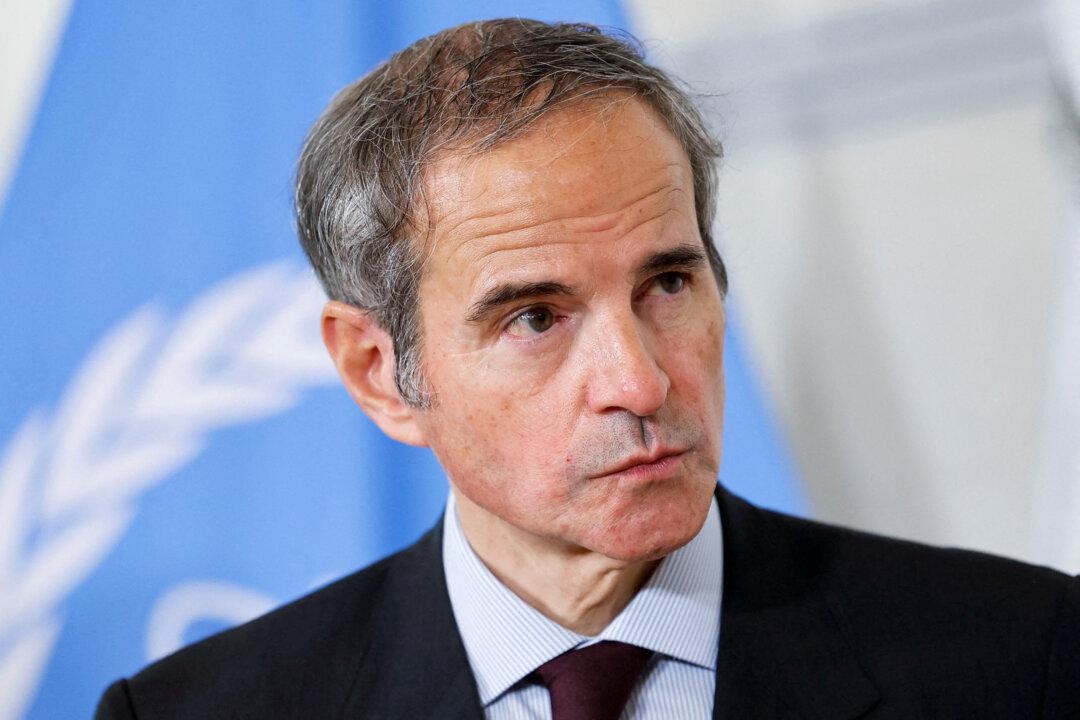Iran could start enriching uranium again in a matter of months, the head of the United Nations’ nuclear watchdog said on June 29.
Trump administration officials have said that the airstrikes completely obliterated three of Iran’s critical nuclear sites, and Vice President JD Vance said last week that he believed the bombing campaign set back Iran’s nuclear program by years.
President Donald Trump said on June 27 that he may even consider ordering more airstrikes on Iran if it returns to enriching uranium at concerning levels.
The 12-day conflict began after Israel conducted a surprise attack on several strategic sites in Iran earlier this month under the premise that it was trying to take away Iran’s capability of producing a nuclear warhead. Both Israel and the United States said Iran was days or weeks away from making a bomb and often cited an early May report from the IAEA that said Iran had been enriching uranium up to 60 percent.
Although 90 percent uranium is needed for fuel to make a nuclear weapon, 60 percent uranium can be quickly enriched to 90 percent purity. The Islamic regime has claimed that its nuclear program is only for civilian energy purposes, but uranium needs to be enriched to only 3.67 percent to produce electricity.
The United States used massive ordnance penetrators, or MOPs, to hit the three underground sites. Fordow, in particular, was built hundreds of feet into a mountain. Satellite imagery alone does not show the damage to the underground portions of the site.
Grossi told CBS’s Margaret Brennan that there is some agreement among U.S., Israeli, and Iranian sources that there is a “very serious level of damage” to Iran’s Fordow, Natanz, and Isfahan nuclear sites and that the infrastructure has been “destroyed to an important degree.”
However, Grossi stressed that some portions of the sites are “still standing” even though there is a significant setback to Iran’s nuclear enrichment capabilities. He said that at some point, the Iranians will have to assess the damage fully and that the IAEA will need to return to analyze the extent of the damage.
“I think we have a snapshot of a program which has been very seriously damaged ... and now what we need to focus on is on the next steps,” Grossi said.
He said some of Iran’s enrichment capacities are “still there” and that within a “matter of months,” Iran could have several cascades of centrifuges spinning and could return to enriching uranium.
“Frankly speaking, one cannot claim that everything has disappeared and there is nothing there,” Grossi said. “It is clear that there has been severe damage, but it’s not total damage, first of all. And secondly, Iran has the capacities there—industrial and technological capacities. So if they so wish, they will be able to start doing this again.”
Grossi added that the IAEA will have to return to the table and develop a technically sound solution to the issue.
“Otherwise, this will come hit us again, in terms of a situation which is not well clarified. And this is an opportunity,” he said. “We do have an opportunity now.”
The United States is set to return to negotiations with Iran over its civilian nuclear program later this week. The talks began earlier this year but were canceled by Tehran after Israel’s surprise airstrikes in early June.
White House press secretary Karoline Leavitt said last week that the upcoming talks are aimed at establishing long-term peace in the Middle East and ensuring that Iran pursues a nuclear program only for civilian purposes.







